5 Best Light Therapy Lamps That Can Improve Your Mood

Your mood can make or break your day—and a wide range of factors can contribute to how you feel. For instance, you may be suffering from a mood disorder that causes prolonged depression or anxiety. Alternatively, you may find yourself feeling blue due to more immediate influences, including stress, poor sleep, inadequate nutrition, social problems, and more. Whatever the underlying cause, experts say that exposing yourself to artificial sunlight can give you that much-needed mood boost. Ahead, we asked therapists to share the best light therapy lamps that get results for their clients.
RELATED: 4 Scents That Can Reduce Depression, New Research Shows.
How Light Therapy Lamps Work

Light therapy lamps are now considered a well-established treatment method for mood disorders, having first been discovered in the 1980s.
“Treatment with daily administration of light, or Bright Light Therapy (BLT), has been proven effective and is now recognized as a first-line therapeutic modality,” says a 2017 study published in the Einstein Journal of Biology and Medicine.
Light therapy lamps work by mimicking natural sunlight, which triggers increased serotonin and dopamine. These chemical changes in the brain can help boost mood and alleviate symptoms of Seasonal Affective Disorder (SAD), also known as seasonal depression.
There are also indirect ways that light therapy lamps can improve your mood, says Vikas Keshri, MSW RSW, clinical director at Bloom Clinical Care Counselling and Therapy Services.
“Light affects the levels of some hormones that regulate mood and sleep. It specifically acts on proteins in the body to regulate an individual’s circadian rhythm. Additionally, light levels affect our ability to sleep well, and poor sleep can contribute to depression,” Keshri explains.
People with SAD and bipolar disorder can benefit most from light therapy. However, Michael Grey, PsyD, LMFT, ABS, founder and therapist at Grey Insight, says that anybody can benefit from using a light therapy lamp, especially when there is less light outside. In fact, he says he uses one for himself—and has felt a profound shift in his own mood as a result.
Grey adds that several of his patients who use light therapy lamps report that they are “less depressed, not sleeping in excess, and are more motivated to maintain a daily regimen.”
When looking for a light therapy lamp, it’s important to look for one that provides an exposure of at least 10,000 lux of light but is low in UV light.
“I want to add that light boxes are not regulated, so it is important to talk with a doctor or other healthcare professional so that you can pick one that is the safest for you,” says Grey. These are some of the best products to ask your doctor about.
RELATED: 15 Life-Changing Habits to Add to Your Wellness Routine.
The 5 Best Light Therapy Lamps
1. Skyview Wellness Table Lamp
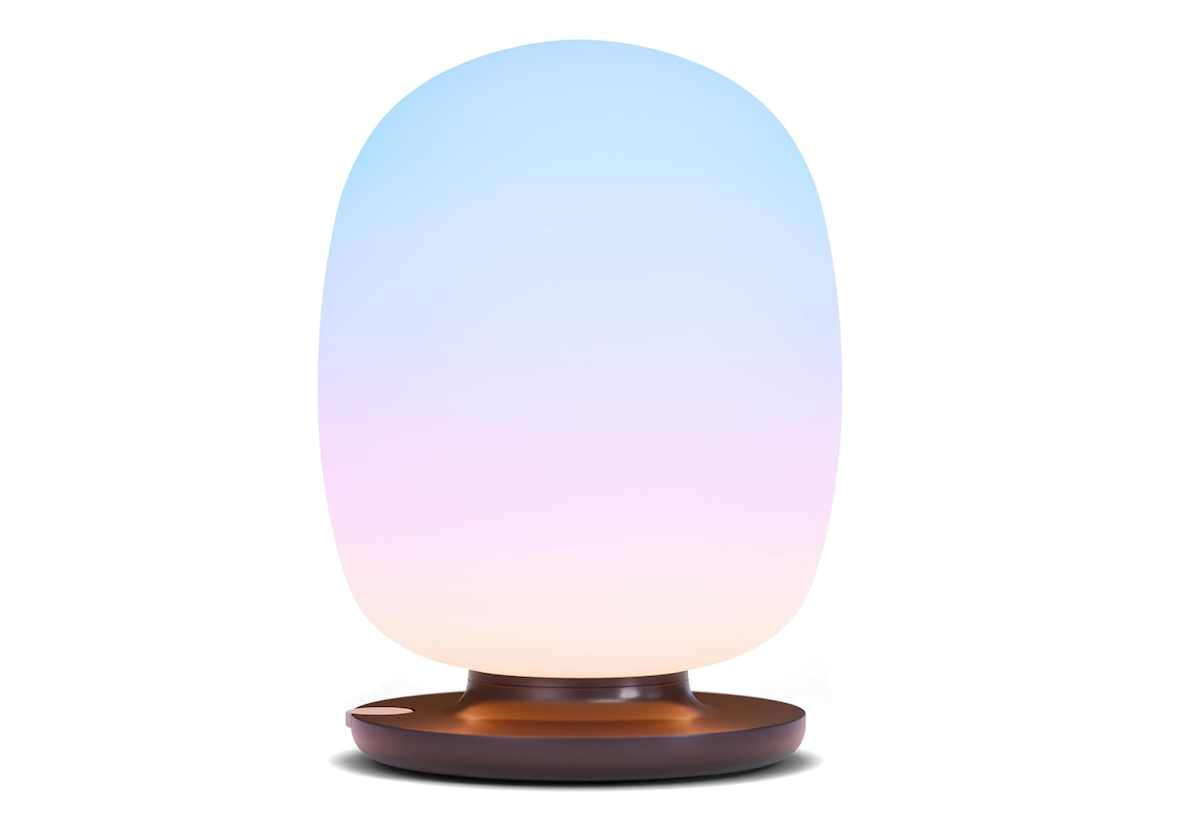
Grey recommends the Wellness Table Lamp Sky-View 2, a mid-priced lamp that offers color-changing technology to suit your needs at various times of day.
In the morning, the lamp begins with a “twilight” setting, which helps wake you up and enhance your mood. Throughout the day, a blue light boosts your mood and alertness. Finally, a warm amber light helps prepare your body for sleep in the evening hours.
2. Verilux HappyLight
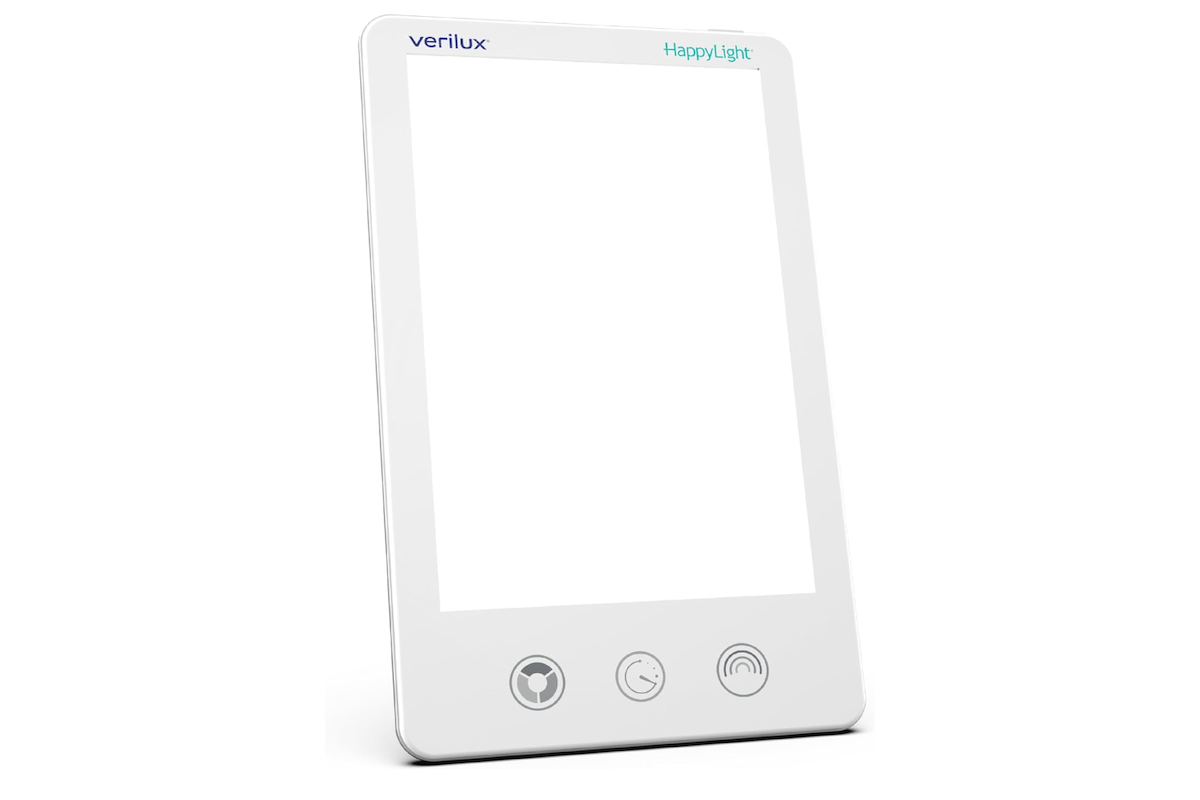
The Verilux HappyLight provides the desired 10,000 lux of light without any harmful UV rays. It has four brightness levels and three color temperatures, so you can find the right setting for you.
Wells says this is a great low-cost option for anyone suffering from Seasonal Affective Disorder: “It mimics the sun and balances circadian rhythm during the dark winter months.”
RELATED: 8 Houseplants That Improve Your Mental Health, Science Says.
3. Carex DayLight Sky
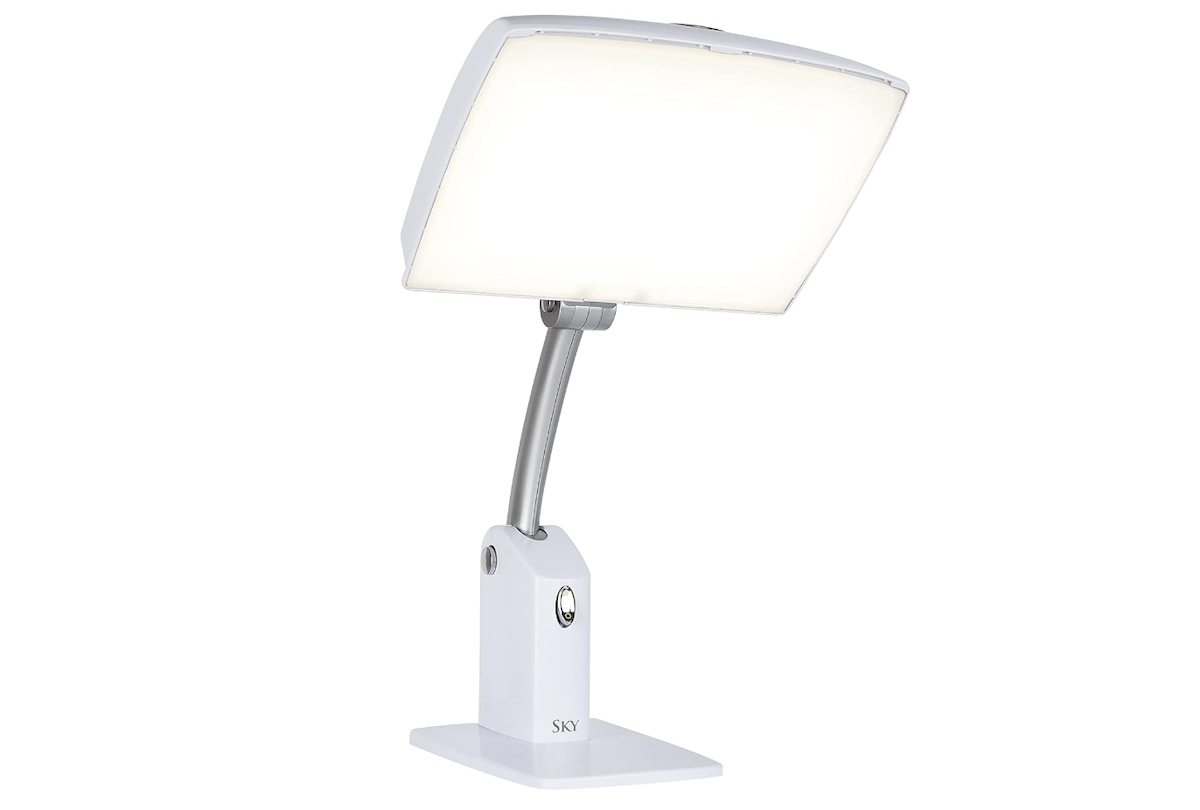
Keshri says there’s another highly-rated product on Amazon that he recommends to clients: the Carex DayLight Sky.
“The Carex DayLight Sky is pretty good for the price. The light seems so much closer to natural sunlight [than other brands],” he says. It’s also got two settings of glare-free, flicker-free lighting to choose from.
4. PlatinumLED Therapy Lamp
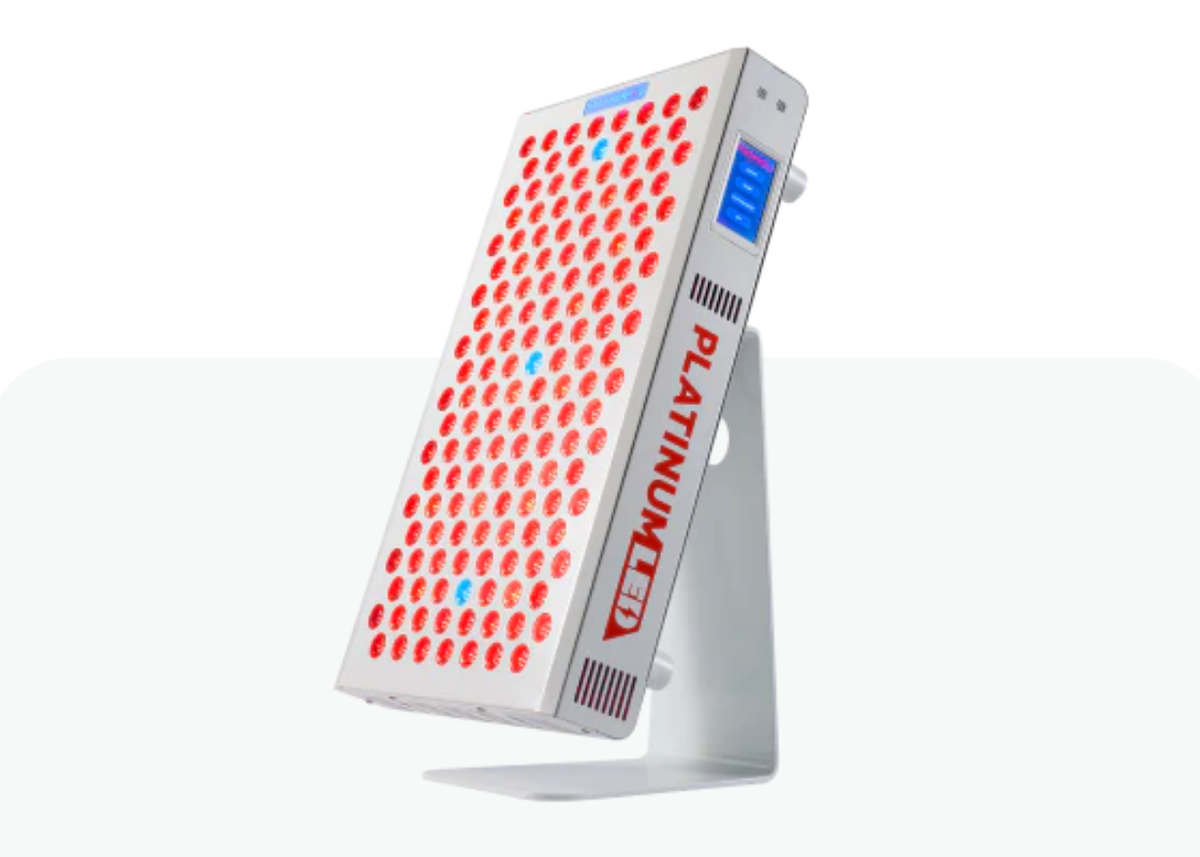
There’s more than one kind of light therapy lamp, and red light lamps are a popular version with a range of wellness benefits.
“A red light therapy device is a powerful tech device that utilizes the power of red light and sometimes near-infrared light to promote a multitude of health benefits,” says Jenny Flora Wells, MSW, LSW, ACSW, a holistic therapist and licensed social worker. “One of the biggest benefits of red light is for your mental health, especially depression. It can aid with giving the body a sense of ‘sunshine’ and brings down inflammation.”
Wells recommends this BIOMAX PlatinumLED Therapy Lamp, saying it’s “the most impressive device I’ve seen.”
5. Hooga HG Series
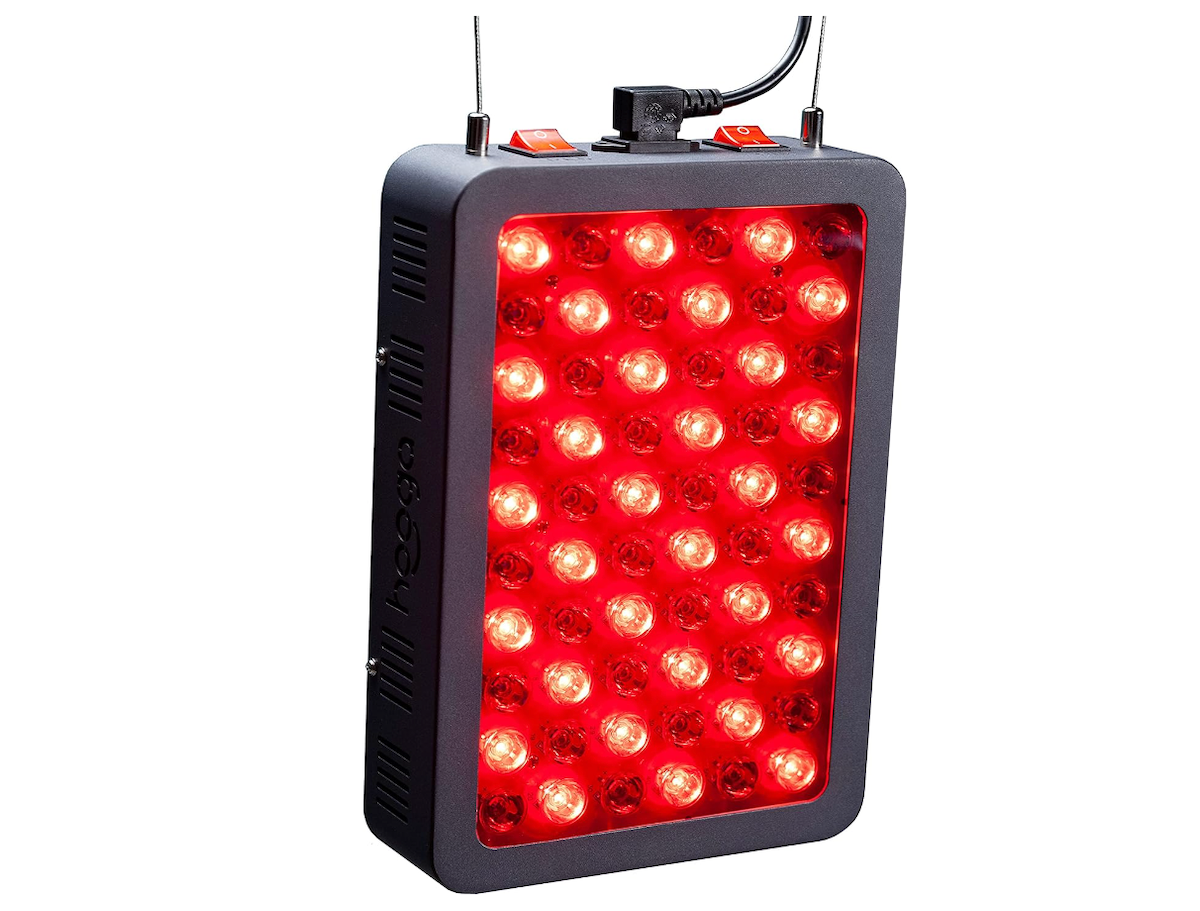
For anyone who does not want to spend upwards of $600 on a red light therapy lamp, Wells offers the Hooga HG Series Red Light Lamp as a cost-effective alternative.
Even at this lower level of intensity, “light therapy is powerful in benefiting one’s overall mental health and lowering cortisol levels for stress reduction,” she explains.
RELATED: 10 Things the Happiest People Do Every Morning.
How to Use Your Light Therapy Lamp
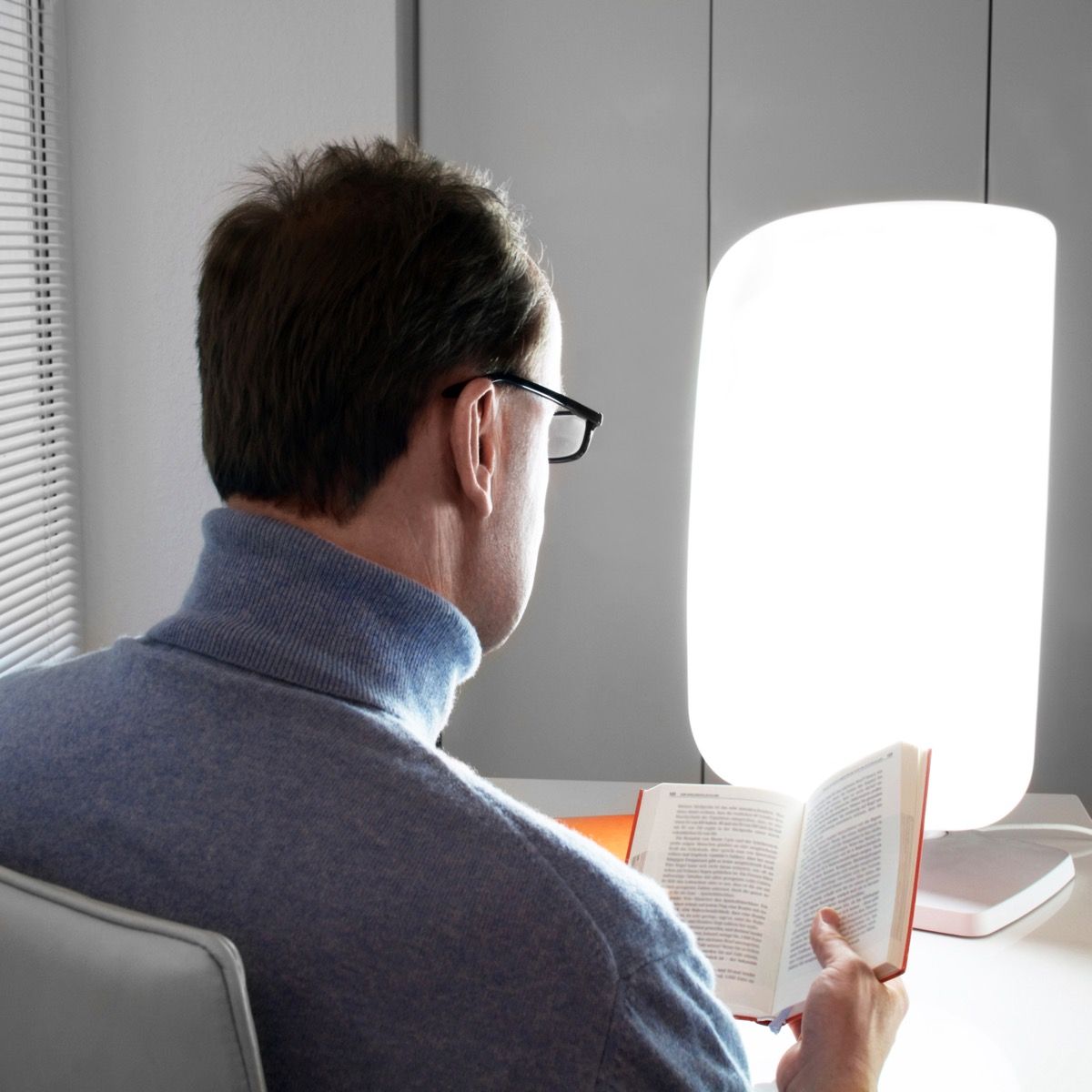
According to the Mayo Clinic, you should use your light therapy lamp for 20 to 30 minutes within the first hour of waking up in the morning. They recommend positioning your lamp roughly 16 to 24 inches away from your face. Though your eyes should be open, it’s important to avoid looking directly at the light.
Grey shares that many people do sunlight-mimicking light therapy as soon as they wake up and red light therapy to help them wind down for the day.
Kishri adds that while light therapy lamps offer a controlled option, you should also maximize natural sunlight exposure and practice good sleep hygiene. “Avoid screens for at least an hour before bedtime, limit alcohol, get morning sunlight, and establish a consistent sleep schedule,” he advises.
Best Life offers the most up-to-date information from top experts, new research, and health agencies, but our content is not meant to be a substitute for professional guidance. When it comes to the medication you’re taking or any other health questions you have, always consult your healthcare provider directly.